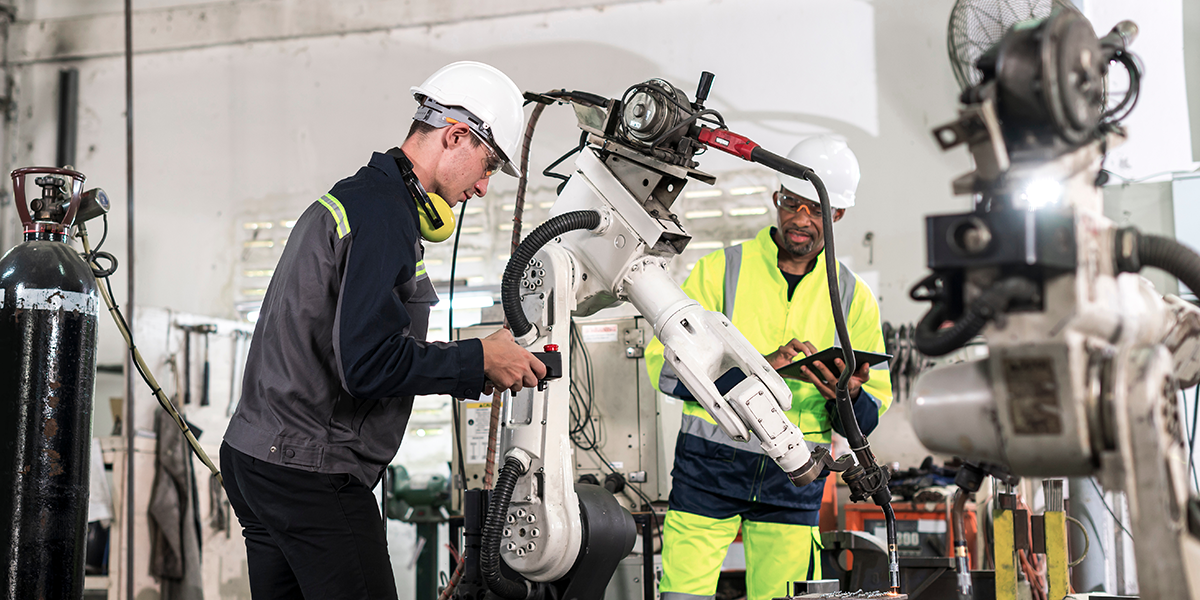Factories aren’t lacking software. They’re drowning in it. Disconnected tools, delayed integrations, and data silos have become the default. Every minute spent reconciling systems is a minute lost to innovation.
That’s why First Resonance built ION. And it’s why we’re launching the ION Marketplace: to unify the operating system and accelerate what matters. Production, not plumbing.
Critical production data is locked in point tools; integrations can take months; and teams burn cycles stitching together procurement, quality, traceability, and analytics when they should be building the next breakthrough product.
First Resonance’s ION Platform was created to change that: a smart, scalable manufacturing operating system that spans the journey from R&D through full‑scale production. Now, with the launch of the ION Marketplace, the operating system becomes a truly extensible ecosystem, where factories can plug in trusted tools faster, reduce integration effort, and scale innovation without added complexity.
As Sergio Martinez, who leads the Marketplace initiative, put it in our First Takes conversation: “We’re basically bringing all the puzzle pieces together so that they don’t have to…making it radically easier for their factory or business to find the right solutions, integrate faster, and grow without the usual friction.” This blog breaks down how that vision becomes real.
Why Factories Need an Operating System, Not Another Silo
Scaling from prototype to production introduces complexity: more work orders, compliance documentation, supplier relationships, and real‑time decisions. Traditional ERPs or a patchwork of SaaS tools struggle to keep pace because they were never designed for the dynamic, iterative reality of modern hardware development.
The result?
- Integration bottlenecks: Each new tool requires custom engineering effort.
- Data inconsistency: Teams operate on stale or conflicting information.
- Slowed innovation: Time that could go toward product improvements is spent on software plumbing.
According to McKinsey, successful digital transformations in manufacturing often lead to 15–30% increases in throughput, 10–30% reductions in maintenance costs, and up to 30% improvements in labor productivity—highlighting how much value is lost when teams are stuck integrating disconnected systems.
An Operating System (OS) model solves this by providing a unified data backbone and shared services (traceability, workflow, analytics, AI) that partners can build on. Instead of forcing manufacturers to choose between “all‑in‑one” monoliths or disconnected point solutions, the OS + Marketplace approach delivers both cohesion and flexibility.

Introducing the ION Marketplace
The ION Marketplace is the natural extension of this OS philosophy: a curated hub where manufacturers can discover, evaluate, and connect the software and services essential to their operations.
Rather than a static directory, the Marketplace is designed as a connective tissue:
- Discovery: Surface best‑in‑class tools aligned with manufacturing needs—procurement, simulation, quality, supply chain, and more.
- Trust: Partners are vetted for security, interoperability, and relevance.
- Faster Time‑to‑Value: Guided integration pathways reduce setup time and technical risk—no custom dev cycles required.
- Scalability: As production volume, complexity, or geographic footprint grows, new capabilities can be added without re‑architecting core systems.
This is how we move from fragmentation to flow. Manufacturers gain an ecosystem that evolves with them; supporting initial digital transformation and long‑term operational excellence.
Partner Spotlight: Arena by PTC: Connecting Engineering to the Factory Floor
One early Marketplace partner, Arena by PTC, illustrates the tangible impact.
Arena is a leading cloud‑native Product Lifecycle Management (PLM) and Quality Management System (QMS) solution that centralizes Bills of Materials (BOMs), engineering change orders (ECOs), quality processes, and supplier collaboration in a single secure workspace. By integrating Arena through the ION Marketplace, live product data flows directly into ION work orders, traceability records, and shop‑floor instructions—ensuring operators always build to the latest revision and quality standards.
What Changes When Arena Meets ION
- Fewer ECO Delays: Engineering change approvals in Arena automatically update ION routings and work instructions, eliminating manual hand‑offs.
- Audit‑Ready Compliance: Quality events logged in Arena link to real‑time production data in ION, simplifying ISO, AS9100, or FDA audits.
- Unified Revision Control: Everyone—from design engineers to line operators—works from a single source of truth, reducing scrap and rework.
- Accelerated New‑Product Introduction (NPI): Integrated PLM + MES shortens the loop from design iteration to validated build, enabling faster innovation cycles.
The Arena example shows how the Marketplace is more than an app store—it’s an enablement layer that turns previously siloed enterprise systems into a cohesive, adaptive network.
Accelerating Innovation Through Extensibility
Speed is no longer optional—it’s a competitive moat.. The companies shipping advanced aerospace platforms, clean energy systems, robotics, or EV technologies ahead of the market aren’t merely working harder, they’re compounding innovation through shorter iteration cycles.
The ION Marketplace underpins this acceleration in three key ways:
1. Reduced Integration Lead Time
Instead of treating every new tool as a bespoke IT project, Marketplace connections provide guided configuration and standardized data mappings. This shrinks the time between “we need capability X” and “capability X is delivering value.”
2. Unified Data Context
When partner applications run against a shared manufacturing data model—parts, processes, test results, supplier records—insights become immediately actionable. No more exporting CSVs or reconciling IDs.
3. Future‑Ready Architecture
As emerging capabilities—AI agents for anomaly detection, predictive procurement, or automated compliance checks—become production‑grade, they can be layered in without destabilizing existing workflows. The OS stays constant while innovation compounds.
Smart + Scalable: De‑Risking Growth
Manufacturers often face a “scaling cliff” where informal processes and stitched systems begin to fail. The Marketplace helps de‑risk that transition:
- Adaptability: Add or swap specialized tools as requirements evolve (e.g., moving from single‑site to multi‑site operations).
- Governance: Centralized control reduces the shadow‑IT risk of teams adopting unvetted software.
- Cost Efficiency: Avoid over‑buying monolithic suites by composing only the capabilities needed, when needed.
This aligns with First Resonance’s core mission: empowering customers to build the world of tomorrow while maintaining operational discipline today.

Redefining “Integration” in Manufacturing
Historically, an integration was a project, it was budgeted, scheduled, and prone to overruns. In the next generation of manufacturing infrastructure, integrations becomes a feature: available on‑demand, secure by default, and continuously improving.
The ION Marketplace is an early manifestation of this shift. But the long‑term vision goes beyond listing partners:
- Quality of Connection: Standardized APIs and event streams enabling bi‑directional automation.
- AI‑Assisted Configuration: (Roadmap) Guided setup leveraging contextual recommendations, “Based on your workflow, here are the partners that reduce cycle time.”
- Network Effects: As more partners and customers participate, collective intelligence (benchmarking, best practices) enriches the entire ecosystem.
While we remain disciplined not to over‑claim, our north star is clear: an operating system where adding capability is as simple and low‑risk as installing a secure module.
What It Unlocks for Manufacturers
If you are leading operations, engineering, or digital transformation at a hardware company, the implications are practical:
Instead of trading flexibility for control, the ION + Marketplace model gives you both—a stable core with dynamic extensibility.
Getting Started
The Marketplace is growing quickly, with new software and service partners joining on a rolling basis. As Ron Close shared in our inaugural First Takes episode, “This is just the beginning… the marketplace is growing fast and we'll keep sharing what's happening in the coming weeks.”
To explore what’s already possible—and influence what comes next:
- Visit the ION Marketplace to browse early partners like Arena by PTC.
- Follow First Resonance on LinkedIn for upcoming First Takes updates and partner spotlights.
- Schedule a Conversation with our team to map Marketplace capabilities to your current scaling initiatives.
Building the World of Tomorrow, Together
Manufacturing is entering an era where agility, traceability, and speed define market leaders. By evolving ION from a platform into an open operating system ecosystem, the ION Marketplace helps manufacturers not only keep up, but also set the pace.
We’re passionate about advancing the industry, empowering engineers and operators with cutting‑edge tools that accelerate their work and unlock the products that shape the future.
Innovation does not scale through duct tape. It scales through architecture: The ION Marketplace gives modern factories a faster path from problem to solution without the drag of disconnected tools.
Explore the Marketplace and see how your team can move faster with less friction.